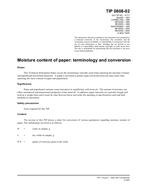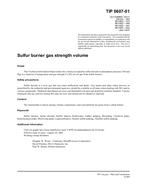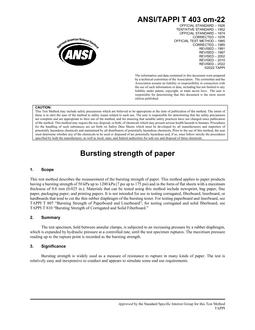Click here to purchase
This Standard Practice describes several procedures for determining the machine direction of most grades of paper and paperboard. Most of the procedures embody the principle that fibers tend to be aligned in the machine direction of the sheet, and this alignment produces observable effects. However, the extent of restraint used in drying can be very important in determining machine direction.
Application of the procedures in this Standard Practice to certain grades of paper, such as sheets laminated to film, creped papers, extensible papers (where it is not unusual for the machine direction tensile to be relatively low and the stretch to be relatively high), and papers reinforced with textile materials, usually result in unreliable determinations. Tearing resistance and folding endurance may be used to determine machine direction for paper known to have been made on a cylinder machine. Tearing resistance should not be used for paper made on a fourdrinier machine, and folding endurance should be used only as specified in Section 7.7.
During manufacture of paper, cross flows coming from the headbox and the forming section may cause preferential alignment of fibers at an angle to the machine direction. Since the procedures in Section 7.11 are affected by fiber orientation, differences as great as 15° may be expected for sheet of uncertain orientation.
Product Details
- Published:
- 04/21/2015
- ANSI:
- ANSI Approved
- Number of Pages:
- 4
- File Size:
- 1 file , 38 KB
- Redline File Size:
- 2 files , 2.2 MB


